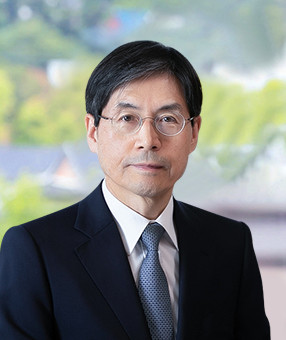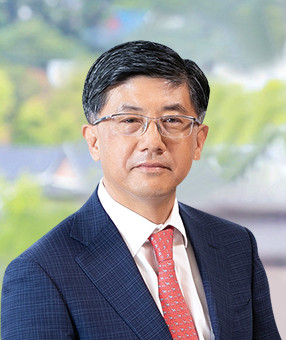On July 25, 2024, the Supreme Court of Korea issued a decision clarifying that the invention of a PEGylated[1] version of a previously-approved active moiety does not qualify as a “new chemical entity” eligible for a patent term extension (“PTE”) under the Enforcement Decree of the Patent Act, even if the PEGylation affects the pharmacological effect of the previously approved drug (Supreme Court Decision 2021Hu11070, July 25, 2024).
Under the Patent Act, patents covering medicinal products subject to Government approval under the Pharmaceutical Affairs Act are eligible to receive a PTE of up to five years if they cannot be practiced immediately after grant due to delays in receiving such approval.
The Enforcement Decree of the Patent Act provides that only the “first” regulatory approval of an active ingredient that is a “new chemical entity” can serve as the basis for the grant of a PTE (“new chemical entity” is broadly defined as a new substance with an active moiety having a novel chemical structure that exhibits a pharmacological effect). The issue in this case was whether the PEGylation of an existing active ingredient was sufficient to render the PEGylated ingredient a “new chemical entity.”
|
1.
|
Background
The plaintiff in this case owned a patent covering a drug comprising the active ingredient “Peginterferon beta-1a” and filed a PTE application relating to the period spent during the regulatory approval process for the drug. Peginterferon beta-1a is a compound that involves PEGylation, which entails the covalent conjugation of polyethylene glycol (“PEG”) with Interferon beta-1a.
The Korean Intellectual Property Office (“KIPO”) rejected the PTE application on the following grounds: (i) another drug had already been approved for the same indication that had the active moiety of Interferon beta-1a; and (ii) both Peginterferon beta-1a and Interferon beta-1a have the same active moiety exhibiting the treatment effect. KIPO thereby concluded that Peginterferon beta-1a was not a “new chemical entity” as defined under Article 7 of the Enforcement Decree of the Patent Act.
The plaintiff filed an appeal, but the Intellectual Property Trial and Appeal Board (the “IPTAB”) upheld KIPO’s rejection. However, on further appeal, the Intellectual Property High Court (the “IP High Court,” formerly known as the Patent Court) revoked the IPTAB’s decision and the Commissioner of KIPO filed a further appeal of the IP High Court decision to the Supreme Court.
|
|
2.
|
Reasoning of Supreme Court
|
|
A.
|
Meaning of “Active Moiety Exhibiting a Pharmacological Effect” Stipulated in Enforcement Decree of the Patent Act
The Supreme Court determined as follows: (i) the term “active moiety exhibiting a pharmacological effect” in the Enforcement Decree of the Patent Act means “the moiety of the active ingredient that has activity and exhibits the approved efficacy/effect of the drug by its inherent pharmacological action;” and (ii) even if a moiety, which is not active on its own, when conjugated with the “active moiety exhibiting a pharmacological effect” of the previously-approved drug, affects the degree of efficacy and effect of the drug, the moiety is not the moiety exhibiting the “pharmacological effect” of the approved efficacy/effect. Thus, the conjugated substance as a whole cannot be regarded as a new “active moiety exhibiting a pharmacological effect” under the Enforcement Decree simply because a new moiety is conjugated to the previously-approved “active moiety exhibiting a pharmacological effect.”
The Supreme Court held that (i) considering the relevant provisions of the Pharmaceutical Affairs Act, “pharmacological effect” under the Enforcement Decree of the Patent Act means “efficacy and effect” on specific diseases or symptoms identified in the regulatory approval; and that (ii) the Enforcement Decree of the Patent Act distinguishes “active moiety exhibiting a pharmacological effect” from “active ingredient,” and specifically requires that the “active moiety exhibiting a pharmacological effect” must be a new substance with a novel chemical structure. Therefore, the Court held that it was reasonable to interpret the term “active moiety exhibiting a pharmacological effect” to mean “the moiety that acts on cells, etc., in human bodies and exhibits the approved efficacy and effect of the product approval.” Thus, conjugating a moiety that is not active on its own with another “active moiety exhibiting a pharmacological effect” in a way that changes the degree of efficacy and effect of the existing drug does not render the entire conjugated substance a new “active moiety exhibiting a pharmacological effect” under the Enforcement Decree of the Patent Act.
|
|
B.
|
Judgment of Supreme Court
Based on the above mentioned legal principles, the Supreme Court reasoned that: (i) in Peginterferon beta-1a, which is the active ingredient of the medicinal product at issue in this case, the moiety exhibiting the treatment effect was Interferon beta-1a; (ii) the PEG portion conjugated with Interferon beta-1a to form Peginterferon beta-1a does not have a different treatment effect but merely affects the degree of activity of Interferon beta-1a; and (iii) the “active moiety exhibiting a pharmacological effect” in the active ingredient of the drug at issue was specifically Interferon beta-1a, not Peginterferon beta-1a. Based on the unrefuted assumption that PEGylation did not change the three-dimensional chemical structure of Interferon beta-1a, the chemical structure of Interferon beta-1a in the drug at issue was the same as the structure of Interferon beta-1a in the previously approved drug. Thus, the entire conjugated substance, Peginterferon beta-1a, could not be considered a “new chemical entity” as defined in the Enforcement Decree of the Patent Act, and the patent at issue was not entitled to PTE. The Supreme Court then reversed and remanded the IP High Court decision for further proceedings in line with the holding.
|
This is the first Supreme Court decision in Korea that interpreted the meaning of “new chemical entity” (a new substance having an active moiety with a novel chemical structure that exhibits a pharmacological effect) under the Enforcement Decree of the Patent Act, which defines which inventions are eligible for PTE. This decision is meaningful in that it has enhanced the predictability of a PTE application for a patent covering a medicinal product.
[1] PEGylation: A process through which molecules are modified by attaching polyethylene glycol (“PEG”), improving their pharmacokinetic properties and biological function.
[Korean Version]







